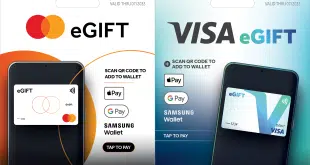For banks, the e-payments business has become an oasis of stability and growth at a time of financial turmoil. But the threat of non-bank entrants, together with inflexible legacy payments systems, could undermine the business just when banks need it most, warns Louis Blatt.
The pressure of maintaining and supporting inflexible systems ensures that payments remain an expensive commodity instead of a strategic and financial advantage.
Louis Blatt is chief product officer at ACI Worldwide Inc., Elkhorn, Neb.
As the effects of the financial crisis continue to reverberate around the world, financial institutions are coming to terms with this newest version of their industry. One thing that has become clear is that the payments business has been given a significant boost by the crisis.
With the more exotic instruments no longer available to mainstream institutions, and a palpably more risk-averse culture putting the brakes on the more lucrative but potentially dangerous strategies, payments provide a steady, reliable, and much-needed income stream.
But the payments business has done more than simply hold the boat steady during the storm. It is a growing area in its own right, with the potential to increase revenues accordingly. Electronic payments in particular are on the increase, edging out checks and cash but also creating new markets where previously payments took place solely on an informal or face-to-face basis. A recent TowerGroup report predicted that electronic-payment transactions will grow in volume at 4.95% per year until 2012, to reach a total of 299 billion items.
Consumers in developed markets are adopting new payment methods. Elsewhere, emerging markets have seen the move to electronic payments accelerate, driven by the introduction of payment cards and most notably mobile payments. Both India and China have seen non-cash payment volumes increase dramatically as their payment infrastructures modernize.
In short, the relative stability of payments in the past few years, and the potential for payments growth in the next few, present a perfect opportunity for the banking sector.
Fertile Ground
But while the financial-services industry has been adapting processes and systems to meet a new regulatory regime, the landscape for payments has changed dramatically. New players have entered the payments business and are starting to steal a march on the established financial institutions and traditional payment processors.
Some of these companies are already recognized names in the financial sector. The likes of Western Union, long familiar as a specialist in international money transfers, are being joined by up-and-coming names that focus purely on the electronic space. Others, like Visa, FIS, and First Data, are all extending their influence in the payments sphere. Prepaid card offerings from retailers are also on the increase, as exemplified by Wal-Mart’s MoneyCard in the U.S.
But there are also newer names that are threatening to disintermediate financial institutions from significant parts of the payments process by challenging long-held notions about what the payments business is and what it can do. Some are gaining ground in traditional wholesale and retail banking markets, others have created and are fulfilling an electronic, person-to-person (P2P) payments environment.
In advanced markets, most consumers under the age of 40 are familiar with PayPal, which leads the market in P2P payments and provides payments facilities for a wide range of online retail and donating Web sites, either through its standard service or its open-credit account, Bill Me Later.
In emerging markets, it is mobile payments that are challenging the dominance of traditional banking institutions. Approximately 60% of the global population is unbanked, but of those more than a billion people currently have a mobile phone and more than 1.7 billion are expected to have one by 2012. Telephone companies that have enjoyed far greater penetration in these markets than the banks have are now taking advantage of that fact and are starting to offer mobile-payment services.
The most extensive of these is the M-Pesa program in Kenya. In India, leading mobile carriers, such as Airtel, have got into the payments business, facilitating a payments network between the country’s millions of mobile-phone owners and its quasi-ubiquitous micro-retailers. In South Korea, a booming and innovative mobile technology industry has facilitated the growth in mobile payments, along with other non-financial services.
The payments industry is also regarded as fertile ground by a new wave of companies that have built their businesses on strong customer loyalty and consumer engagement. Apple, Facebook, Google, and Amazon have all started to build their presence within the payments space, focusing on the client-facing and processing segments of the value chain.
Although these organizations have little if any history in payments, they bring high levels of trust and brand loyalty with them, qualities that banks are working to regain. They also have what passes for trust among the notoriously fickle youth market, members of which have not had sufficient time to develop strong attachments to a particular banking brand.
These big names are joined by more specialist providers like Green Dot, Boku, and Square. What they lack in international brand awareness, they make up for with streamlined and focused business models. They offer a customer-focused, convenient, and low-cost alternative that increasingly resonates with modern consumers and commercial organizations alike.
Isolated Islands
Traditional financial institutions either have to compete with these organizations or collaborate. There are certainly instances where the value of the transactions involved are prohibitively low, and the non-interest revenue to be had is insufficient to justify the necessary investment. But most banks are committed to offering payment services and many are prepared to cross-subsidize these in order to gain and retain current accounts and associated liquidity. Rather than withdraw from all but big-business payments, banks should closely examine the possibility of partnership initiatives. These can provide an alternative route to success.
However, this will depend on a flexible technological infrastructure. And that is one big advantage that these new entrants have. They have been enabled by consumer-friendly regulations and fast-emerging technologies, but they are also enabled by an absence of baggage accumulated from years in the payments space. They offer new products and services, carefully targeted and often fulfilling a niche demand, without having to compromise because of the limitations of their information technology.
This is in direct contrast to many financial institutions, which are struggling with legacy payments infrastructure built up over 30 years and comprising a galaxy of systems, information, processes, and people to support them. These cumbersome and unresponsive systems have built up functional silos and isolated islands of information, accompanied by redundant processes and duplicated effort. Not surprisingly, they can’t communicate or integrate effectively.
The complexity of the current arrangement inevitably has a detrimental effect on the innovation required to compete in a newly dynamic market. Neither budget nor resources are available to do much more than maintain the status quo, and the lack of customer focus is telling. The pressure of maintaining and supporting inflexible systems ensures that payments remain an expensive commodity instead of a strategic and financial advantage.
Without a flexible, efficient, and responsive payments platform, the opportunity offered by business agility will be lost. Banks offer a level of knowledge and expertise that is not necessarily found in new competitors. But if these are cordoned off in inflexible systems or in the minds of a few individuals, they do little to help institutions compete.
Traditional institutions still have a dominant position in payments, but it is no longer an exclusive one. If more ground is not to be ceded to new, innovative providers, banks must look at creating the agility within their organization that will enable them to navigate this rapidly shifting environment.





